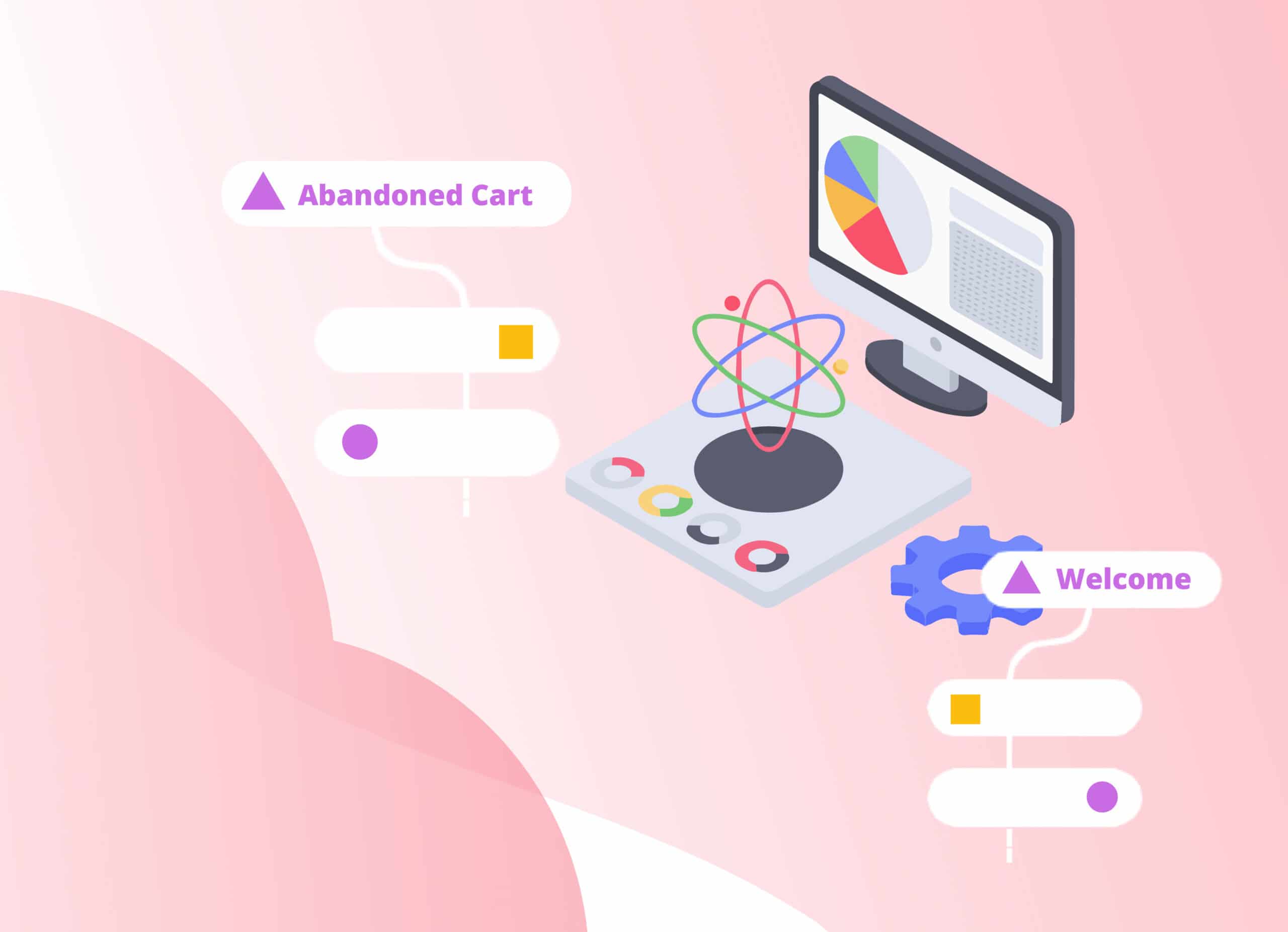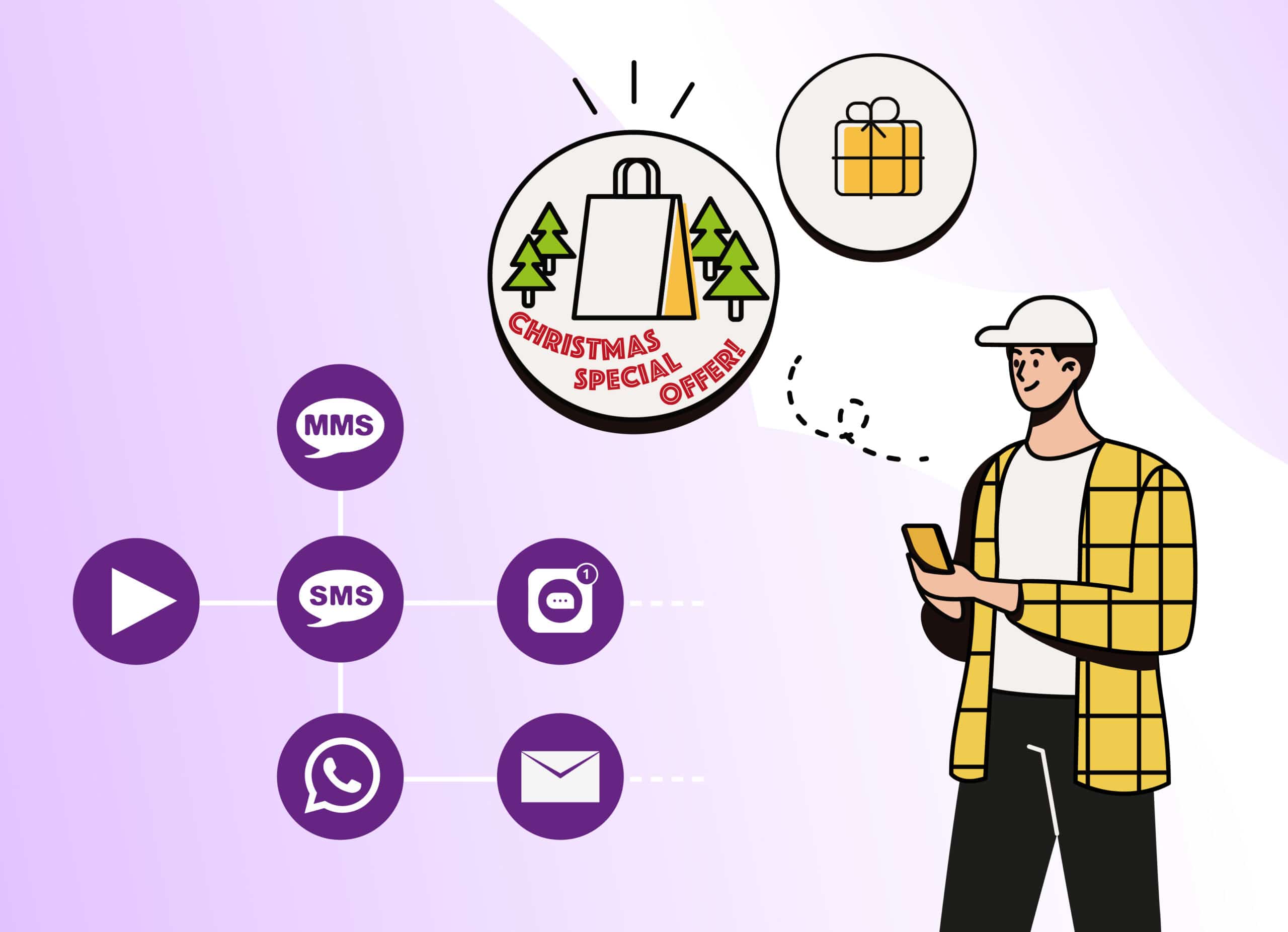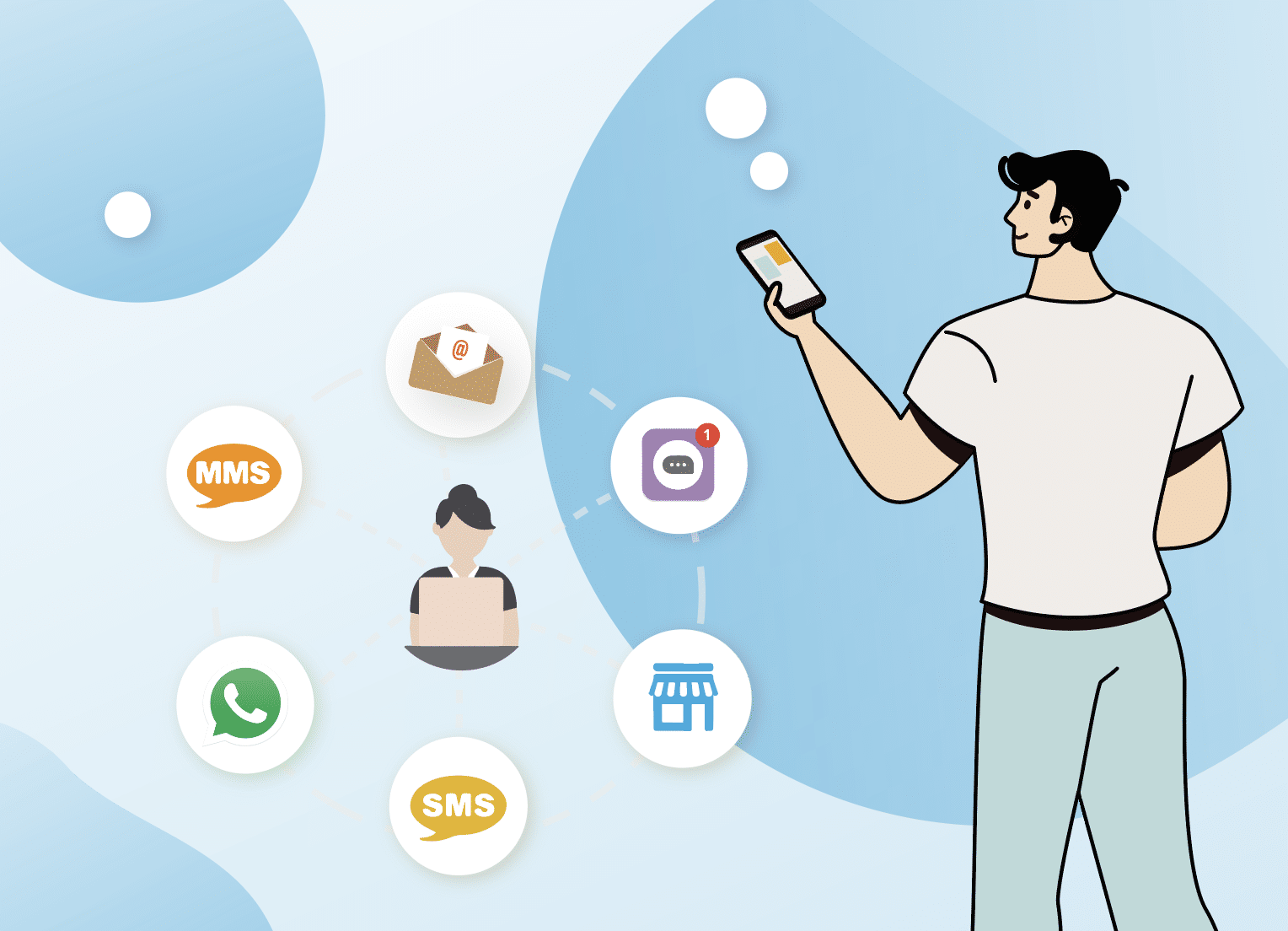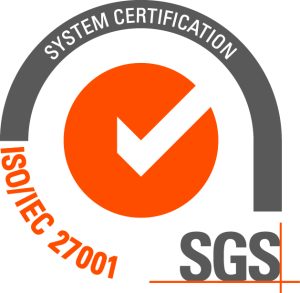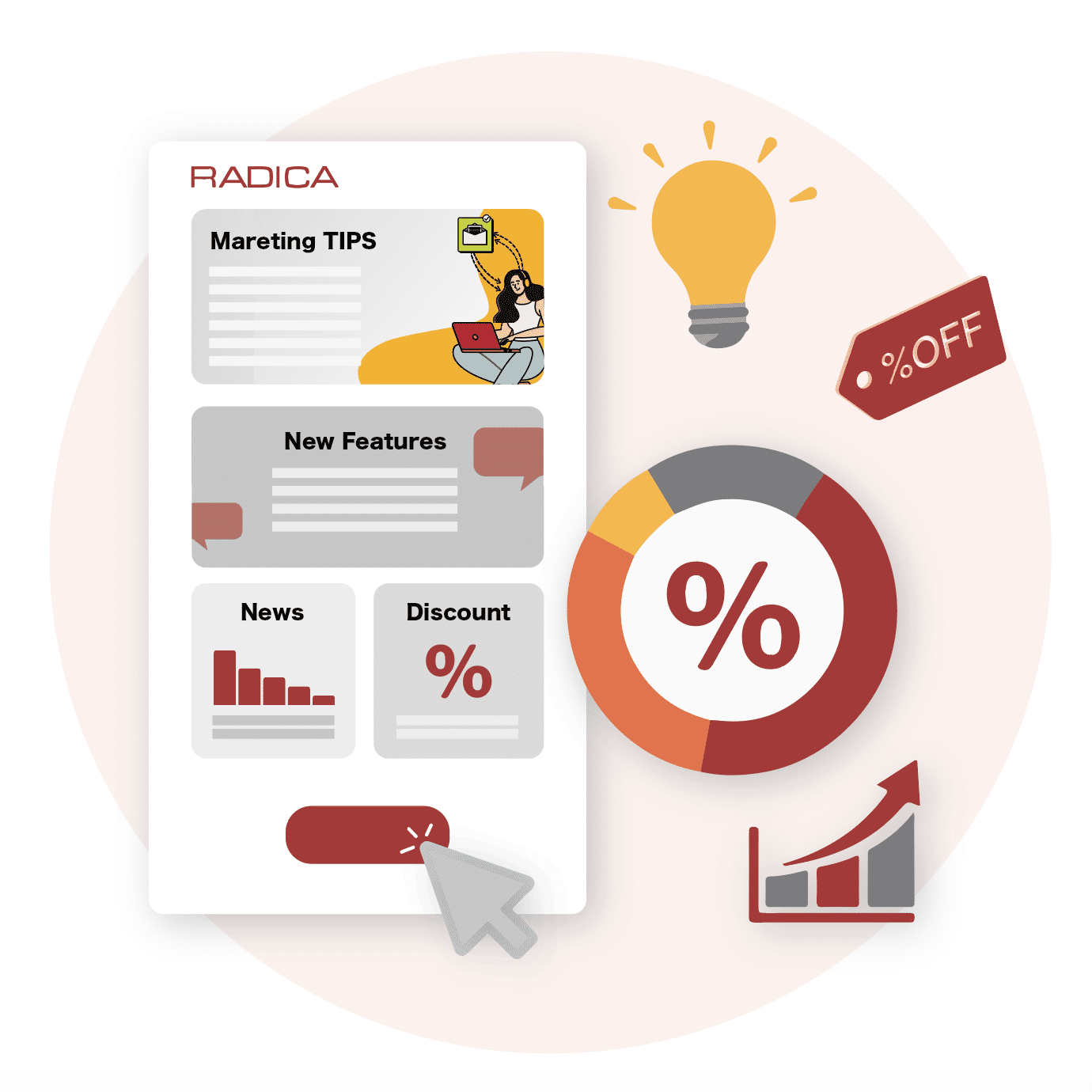The Role of Marketing Automation in Digital Transformation
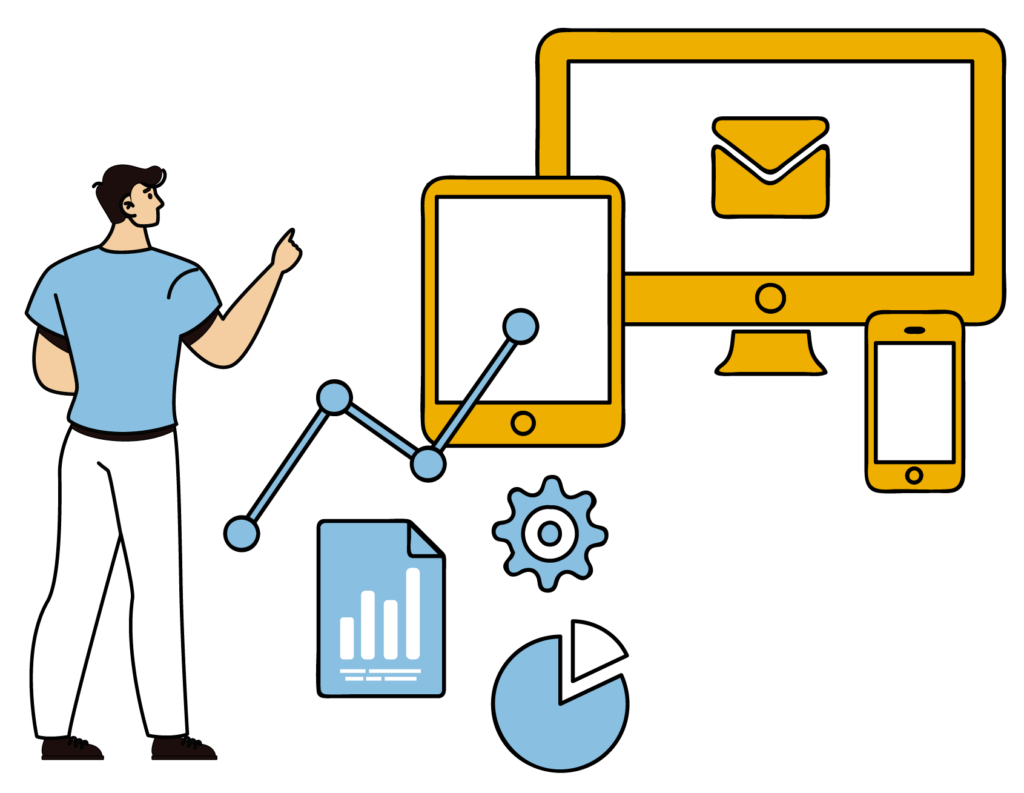
FREE SIGN UP TO OUR LATEST E-TIPS FROM RADICA
What is digital transformation?
Digital transformation examples range from mobile applications, improved connectivity, buy online & pick up in-store to AR capabilities to try on make-up products, clothing items, or even pieces of furniture.
In fewer words, digital transformation is the process of implementing new digital capabilities to improve efficiency, drive innovation, and create value for your audience.
Why do we need digital transformation?
The power of digital transformation lies in its ability to drive change across the entire organization—it seeks to transform every process, affect every interaction with customers and competitors, and disrupt every aspect of the status quo. By embracing digital transformation, companies can truly harness the power of their data assets, which will allow them to improve decision-making, grow their bottom line and gain a significant competitive advantage.
Why marketing automation is essential for your digital transformation journey?
Marketing automation is an essential facilitator of digital transformation. It can drive big data insights and personalization throughout the buyer’s journey while removing the need for manual input when it comes to repetitive tasks. By automating lead generation, nurture and conversion, organizations can free up time and money to be spent on more strategic initiatives that will directly impact revenue growth. The shift to digital is no longer a choice; it’s a mandate.
To clearly grasp the marketing automation benefits, let’s have a look at some industry statistics:
• 80% of companies have seen an increase in leads via marketing automation;
• 77% of marketers relying on marketing automation tools reported growth in conversions;
• 80% of marketers believe their success is facilitated by marketing automation.
Marketing automation examples include automated personalized emails that have been proven to generate 320% more revenue compared to standardized emails. Such tools streamline the process of capturing leads, nurturing them and turning them into sales-qualified leads, eliminating the need for human input and allowing your marketing team to focus on more creative tasks.
How to successfully implement marketing automation capabilities to achieve digital transformation?
Create measurable content strategies

For example, say you’re trying to reach millennial women with a message about your travel insurance. Knowing that this demographic is often prone to spontaneous and frequent trips (and potentially more likely to book a flight spontaneously than other demographics), you could create a series of blog posts about the best places to travel for specific occasions—researching the most popular destinations among millennials over the past year and writing blog posts around them. This will give this demographic information they need when they need it most—when they’re deciding where they want to go next.
Using data from Purchased Lists and other 3rd party data sources such as Google Analytics and Facebook Pixel data, you can create highly targeted email campaigns that speak directly to the consumer at the moment she’s most prone to making the purchase.
Create customer touchpoints
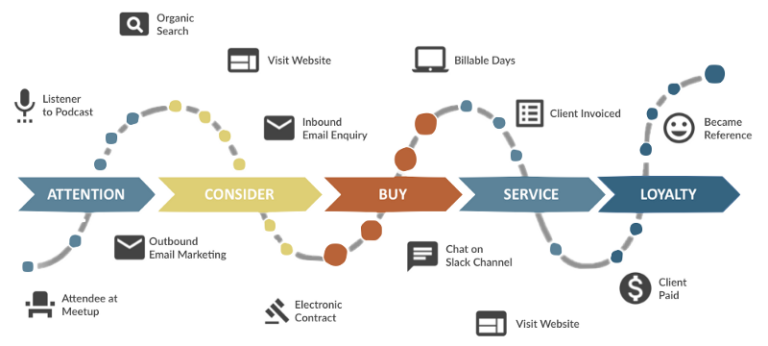
Starting at the beginning is vital: you want to make sure you’re talking to your customers where they are instead of trying to force them into a conversation with you.
Generate relevant messages
The first step to marketing automation is collecting data. With a good set of data, you can create relevant segments of customers and start sending automated messages that truly appeal to them. Some marketers prefer to receive feedback after the campaign is over, but the best way is to include a call-to-action in the email that asks people to reply with their thoughts on the message they received. This will help you create better-targeted campaigns in the future.
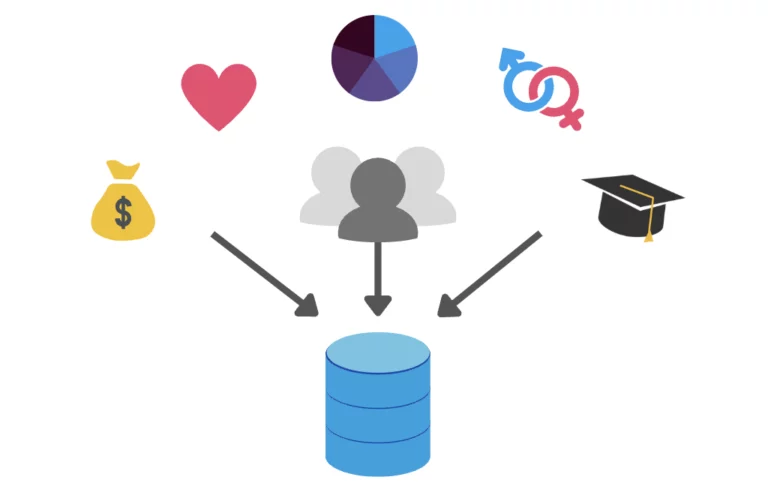
Collect Customer Data
The purpose of marketing automation is not just about getting someone through a sales funnel; it’s about building relationships that last over time.
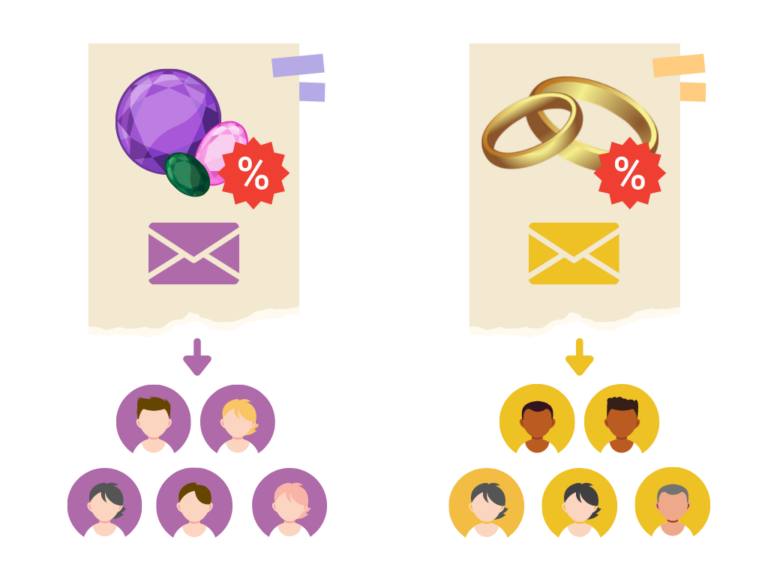
Tailor-made Email for different customer with different Content
Conclusion
Marketing automation provides companies with unique consumer experiences by individualizing their marketing messages. If you know that your potential customer is highly likely to convert, it makes sense to give them a message or offer tailor-made for them. Automation accomplishes this through a combination of the creation of custom consumer profiles, the use of dynamic content, and on-demand messaging. Digital transformation is about making significant shifts throughout your organization or operation to ensure that your business is future-ready for a rapidly changing digital world
At Radica, we specialize in creating tailored marketing automation solutions that enable our clients to execute their marketing strategies successfully. Check out our dedicated marketing automation section, and feel free to contact us anytime.
Get a Free Personalized Demo
Learn how RADICA platform can help grow your business with consultation
Features Articles
Get ready to find a professional email marketing company in Hong kong?
About RADICA
RADICA is a Hong Kong leading email marketing solution provider dedicated to accelerating revenue and maximizing customer connection with customer engagement solution in B2B, B2C and E-commerce industries. With RADICA’s advanced onmichannel marketing automation platform RI+, it is much easier and effective to spread out cross-channel messages with automated and personalised journey, even with high volume within short period of time. Our clients ranging from luxury, banking and insurance to food and beverage like Chanel, BEA, LEVI’s, Chow Sang Sang and Starbucks. Since 2000, RADICA as the leading email marketing and CRM agency in Hong Kong have focused on growing the value of their customer database by making wise use of data analytics in direct marketing. Learn more Radica Systems Limited at www.radicasys.com.

